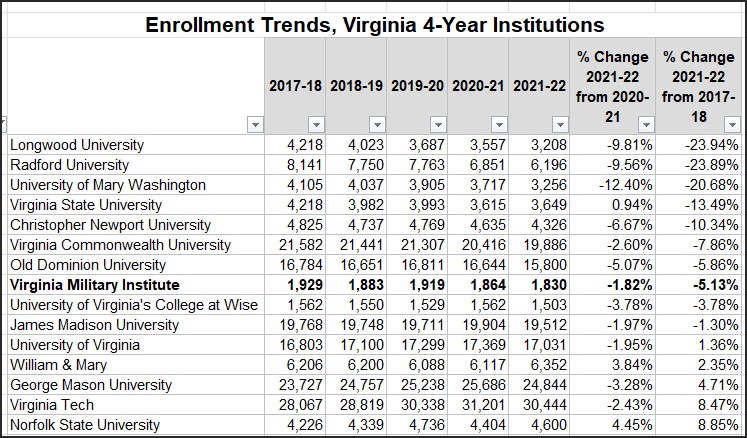A week ago I published data showing the winners and losers among public Virginia four-year colleges and universities in the enrollment sweepstakes for the 2022-23 academic year. Larry Houseworth, a Virginia Military Institute alumnus, has shared the table above showing the five-year record. For most institutions, declining/increasing enrollment this year represents a continuation of trends evident for several years.
An exception is VMI, where the trend had been stable through 2019-20, then started sinking after the military academy was vilified as systemically sexist and racist not only by The Washington Post (what else do you expect?) but by one of its more prominent alumni, then-Governor Ralph Northam, and his hand-picked “independent” investigators.
— JAB


Leave a Reply
You must be logged in to post a comment.